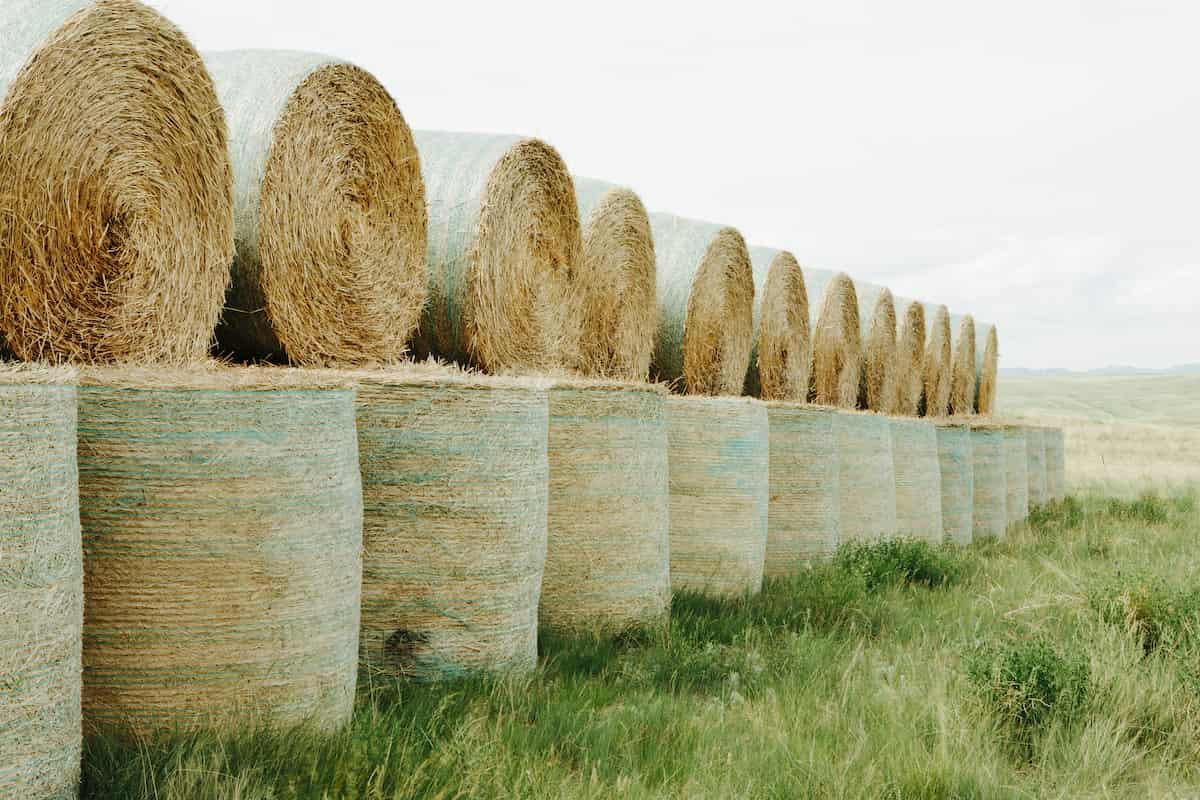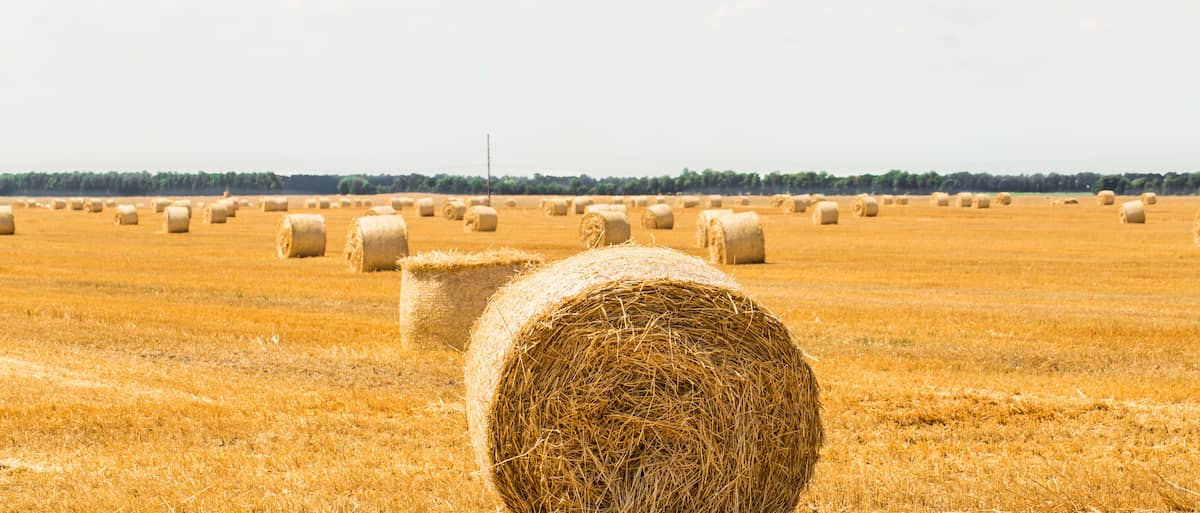Hay forage farming is a vital aspect of the agricultural industry in California. With the state’s favorable climate and diverse geography, hay crops such as alfalfa, Bermuda grass, and fescue are widely grown. Whether you’re a novice farmer or a seasoned agriculturalist looking to diversify your crop portfolio, this comprehensive guide will help you navigate the entire process of establishing a hay forage farm in California, from planting to harvesting.

How to Start Hay Forage Farming in California
Selecting a Suitable Site
The first step in establishing a hay forage farm is choosing an appropriate site. Consider factors such as soil type, climate, water availability, and accessibility to markets. Well-drained loam or sandy loam soils with a pH between 6.0 and 7.5 are ideal for most hay crops. Ensure the chosen site has access to a reliable water source, as proper irrigation is crucial for optimal hay production.
Choosing the Right Hay Crop
Selecting the right hay crop is essential for successful forage farming. California’s most common hay crops include alfalfa, Bermuda grass, and fescue. Alfalfa is a popular choice due to its high yield and nutritional quality. Bermuda grass is well-adapted to the state’s climate and offers good resistance to pests and diseases. Fescue is often used for pasture and can be mixed with other grasses or legumes to improve overall forage quality.
Hay Forage Fertilizer Requirements
Fertilizer requirements vary depending on the specific hay crop and local soil conditions. As a general guideline, alfalfa requires 12-15 pounds of phosphorus (P2O5) and 50-60 pounds of potassium (K2O) per ton of dry matter produced. Bermuda grass typically needs 60-80 pounds of nitrogen (N), 15-20 pounds of phosphorus (P2O5), and 60-80 pounds of potassium (K2O) per acre annually. Fescue has similar requirements to Bermuda grass, with 50-80 pounds of nitrogen (N), 20-25 pounds of phosphorus (P2O5), and 50-60 pounds of potassium (K2O) per acre annually.
Preparing the Soil
Proper soil preparation is crucial for successful hay production. To start, you should analyze the soil’s pH and nutritional content. Based on the test results, apply the necessary amendments such as lime, phosphorus, or potassium. Plow and disk the soil to break up clods and create a smooth, even seedbed.
Planting the Hay Crop
Planting dates vary depending on the specific hay crop and regional climate. In California, the best times to plant hay fields are in the spring and autumn, when the weather is warm, and there is a lot of rain. Use a seed drill or broadcast seeder to distribute the seed at the recommended seeding rate evenly.
In case you missed it: How to Start Hay Forage Farming in the USA: A Step-By-Step Guide for Planting to Harvesting

Irrigation and Weed Control
A detailed irrigation schedule for hay forage crops depends on the specific crop, soil type, and local climate conditions. During establishment, provide frequent, light irrigation to maintain consistent soil moisture and encourage seed germination and root development. Once the crop is established, transition to a deeper, less frequent irrigation pattern to encourage deep-root growth and improve drought tolerance. During the peak growing season, irrigate more frequently to meet the increased water demand of the crop.
In arid regions like California, consider implementing efficient irrigation methods such as drip irrigation or micro-sprinklers to conserve water and reduce evaporation losses. Tailor your irrigation schedule to accommodate seasonal changes in temperature and precipitation and adjust as needed based on weather forecasts, crop growth stages, and observed soil moisture levels. To control weeds, implement an integrated weed management plan that includes mowing, herbicide application, and maintaining proper crop density.
Hay Forage Yield per Hectare
Yields vary depending on the hay crop, management practices, and local growing conditions. On average, alfalfa yields 12-15 tons of dry matter per hectare per year, while Bermuda grass yields 7-10 tons per hectare per year. Fescue typically produces 5-8 tons of dry matter per hectare annually. Implement best management practices such as proper fertilization, irrigation, and pest control to maximize hay forage yield.
Pest and Disease Management
Pests and diseases can significantly impact hay forage yield and quality. Regular scouting and early detection are key to effective pest and disease management. Common pests in California hay crops include aphids, armyworms, and cutworms. Diseases such as leaf spot, crown, root rot, and rust can also pose threats. Implement integrated pest management (IPM) strategies to minimize pest and disease pressure, including biological control, cultural practices, and chemical control when necessary.
Harvest Management
The timing of hay forage harvest is crucial for optimizing yield and nutritional value. Harvest hay crops at the proper maturity stage to ensure maximum nutrient content and digestibility. For alfalfa, this is typically at the early bloom stage, while Bermuda grass and fescue should be harvested at the late boot stage or early head emergence.
Methods of Harvesting
There are two primary methods of harvesting hay forage: mowing and baling. Mowing involves cutting the forage close to the ground using a sickle bar, disc, or rotary mower. The cut forage is then allowed to dry in the field, either in windrows or spread out, to reduce the moisture content to 15-20% for baling.
Baling hay can be done using either round or square balers. Round balers produce large cylindrical bales more suited for on-farm storage or livestock feeding. Square balers have smaller, rectangular bales that are easier to transport and handle. Regardless of the baler type, it is crucial to ensure the hay is properly dried before baling to prevent mold growth and spoilage.
Storage and Marketing
Proper storage is essential to maintain hay quality and prevent losses. Store hay bales under cover, either in a barn or under tarps, to protect them from rain and sun exposure. Keep bales off the ground using pallets or a raised platform to minimize moisture absorption and spoilage. Marketing hay forage through various channels, including direct sales to local livestock producers, brokers, or feed stores. Establishing a reputation for high-quality hay and building strong customer relationships is crucial for long-term success in the hay market.
In case you missed it: How to Start Lettuce Farming in California: A Step-by-Step Production Guide for Planting to Harvest

Conclusion
For a hay fodder farm to succeed in California, it must be well-planned, pay attention to details, and follow the best management practices. This guide will help you maximize your hay fodder business and experience agricultural prosperity.
- Feed Your Flock for Less: Top 10 Tips to Save on Chicken Feed
- Ultimate Guide to Ossabaw Island Hog: Breeding, Raising, Diet, and Care
- Hatching Answers: The Top 10 Reasons Your Chickens Aren’t Laying Eggs
- Eggs and Economics: Breaking Down the Cost of Raising Backyard Chickens
- Defend Your Greens: Proven Methods to Keep Iguanas Out of Your Garden
- Ultimate Guide to Cinnamon Queen Chicken: A Comprehensive Guide for Beginners
- Ultimate Guide to California Tan Chicken: Breeding, Raising, Diet, Egg-Production and Care
- Ultimate Guide to Marsh Daisy Chicken: Breeding, Raising, Diet, and Care
- 10 Types of Chicken Farming Businesses You Can Start for Profits